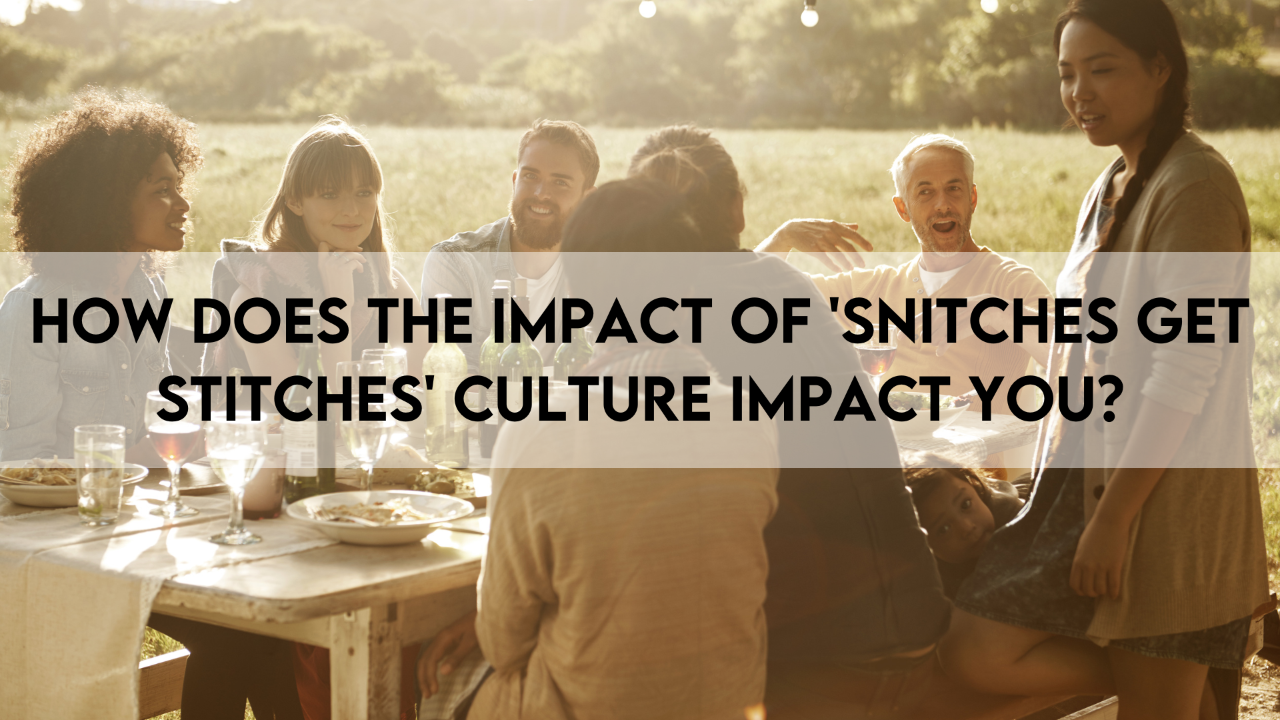Challenging 'Snitches Get Stitches' Culture

I’m sure that you’ve heard the phrase 'snitches get stitches.' I want you to really think about what that means.
You see, I think that people don’t understand what snitching really is when someone is seeking safety.
Bystander intervention has been found to be less common than expected. Many students witness bullying incidents but do not report them or intervene. Schools and organizations are working to educate students about the importance of standing up against bullying.
Unfortunately, I believe that bystanders choose not to act because the 'snitches get stitches' culture is so prevalent, and whether you know it or not, you and I have at one point or another supported that belief.
You see, there is great fear in REPORTING something out of concern that you will be seen as 'the snitch.'
I can think of several movies where a tragedy has happened, and the members of the community are still apprehensive or completely against reporting the perpetrator. The apprehension comes from fear of becoming the next target, and at a certain level, it comes from a real belief of loyalty to community members because they feel that they are all experiencing a mutual struggle that bonds them.
According to research studies published in The Journalist’s Resource:
'Older, white females who are married are the kind of victims most likely to report crimes. Compared to youth and minorities, older whites are more likely to trust the police and have confidence in their ability to investigate crimes. Lower rates of reporting by youth and minorities happen because these victims have often previously experienced what they perceive to be unfair police enforcement activities, leading them to distrust the police.'
You could say that mutual struggle would be unjust police activities against youth and minorities.
But the real question here is, how do we change this? Violence is not something that just starts all of a sudden, and compliance with it doesn’t happen overnight either.
From my observations, I believe that small acts of injustice, such as bullying, are the foundations of violence.
You see when we allow a child to bully another child because it seems not very harmful to the outsider, we are pretty much telling the bully that their actions are acceptable. If we were to immediately impose corrective action on the bully for hurting someone, the message would be loud and clear to all members of that community that bullying behavior is not tolerated, and consequences will be imposed. If we were to teach each child, teacher, and staff member to always say something against bullying behaviors in a kind way, that small community would know that the standard is to speak up when negative behavior is seen.
One of the most powerful forces is the rejection of an action by a peer. If you don’t believe me, try it out or think of a time when you told your child not to do or say something, but they only stopped until a friend or peer agreed with you.
It happens! Think hard, and I promise that you’ll remember at least one time that happened.
So, what’s my main message today? To adopt these small habits to speak up when you and your children see something unacceptable because if you don’t, then you are becoming part of the problem. It is your business if it is happening in your community!

